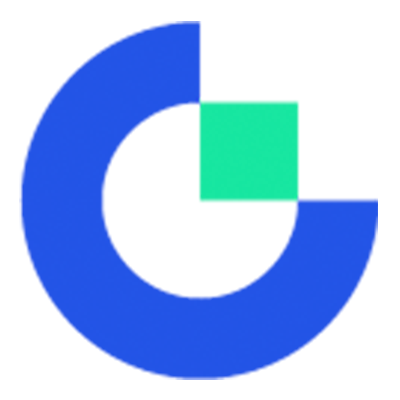Introduction
Are you ready to dive into the future of the internet? Web3, the decentralized revolution, is reshaping our digital landscape. From blockchain technology to NFTs, this paradigm shift promises enhanced privacy, user control, and innovative applications. Discover how Web3 is transforming industries and why it's crucial for investors and consumers alike to understand its potential impact.
The Rise of Web3: A Decentralized Internet Revolution
The internet landscape is undergoing a profound transformation with the emergence of Web3, heralding a new era of decentralized and user-centric digital experiences. Web3 technology adoption is gaining momentum, promising to reshape how we interact, transact, and consume information online. This revolutionary concept, first coined by Ethereum co-founder Gavin Wood in 2014, represents a significant departure from the centralized models of Web 1.0 and Web 2.0 [1].
Web3 is built on the foundation of blockchain technology, which enables a trustless and transparent digital ecosystem. Unlike its predecessors, Web3 aims to give users greater control over their data and digital identities. This shift towards a decentralized internet architecture is driven by growing concerns over data privacy, platform monopolies, and the increasing influence of tech giants [1].
The potential impact of Web3 extends far beyond technological advancements, resonating deeply with societal dynamics. By prioritizing decentralization and user ownership, Web3 has the potential to democratize access to information and resources. This paradigm shift could empower individuals and communities, particularly those marginalized by the current centralized model [1].
Key Technologies Powering Web3
At the heart of Web3 lies blockchain technology, which serves as the backbone for this decentralized internet revolution. Blockchains are online storage systems that utilize encryption and distributed computing to protect stored data. This approach creates a "trustless" format, where users are not required to rely on a central authority to safeguard their data or verify transactions [2].
Smart contracts, another crucial component of Web3, are self-executing agreements with the terms directly written into code. These contracts automatically execute when predefined conditions are met, eliminating the need for intermediaries and reducing transaction costs. Decentralized finance (DeFi) applications leverage smart contracts to offer financial services without traditional banking institutions [2].
Non-fungible tokens (NFTs) have emerged as a popular application of Web3 technology, enabling unique digital ownership and provenance tracking. The NFT market has experienced explosive growth, with Jefferies predicting a market value of over $85 billion by 2025 [2].
Real-World Applications and Use Cases
Web3 is already making significant inroads across various industries, transforming how businesses operate and interact with consumers. In the realm of social media, platforms like Steemit are pioneering blockchain-based content creation and curation, rewarding users for their contributions and engagement [2].
Supply chain management is another area benefiting from Web3 technologies. Everledger, for instance, utilizes blockchain to create transparent and immutable records for high-value assets, enhancing traceability and reducing fraud [2].
The financial sector is witnessing a revolution with decentralized exchanges like Augur, which facilitate peer-to-peer trading without the need for intermediaries. These platforms offer increased transparency, reduced fees, and greater accessibility to global markets [2].
Major brands are also embracing Web3 to enhance customer engagement and loyalty. Nike, for example, has ventured into the metaverse by selling virtual sneakers in Roblox, while Dolce & Gabbana auctioned a nine-piece collection of NFTs for $6 million, which included a virtual suit wearable in the metaverse [3].
The Future of Web3: Opportunities and Challenges
As Web3 continues to evolve, its potential to reshape the digital landscape becomes increasingly apparent. The decentralized nature of Web3 promises enhanced security, privacy, and user control over personal data. This shift could lead to more equitable digital ecosystems and novel business models that prioritize user value [1].
However, the road to widespread Web3 adoption is not without obstacles. Technical challenges, such as scalability and interoperability, need to be addressed to support mass adoption. Additionally, regulatory uncertainties and the need for user education pose significant hurdles [1].
Despite these challenges, the momentum behind Web3 is undeniable. A McKinsey report highlights a surge in interest surrounding Web3 elements since 2018, spanning equity investment, online searches, patent filings, and job postings [1].
| Aspect | Web2 | Web3 |
|---|---|---|
| Data Control | Centralized (Big Tech) | Decentralized (Users) |
| Privacy | Limited | Enhanced |
| Transactions | Intermediary-dependent | Peer-to-peer |
| Governance | Corporate-controlled | Community-driven |
| Monetization | Platform-centric | User-centric |
As Web3 technologies mature and overcome current limitations, we can expect to see a hybrid model emerge, where centralized and decentralized applications coexist and complement each other's strengths [3]. This evolution will likely lead to more inclusive, transparent, and user-empowering digital experiences.
For investors and consumers alike, understanding and embracing Web3 is crucial as it shapes the future of the digital economy. Platforms like Gate.io are at the forefront of this transition, offering users access to a wide range of Web3-related assets and services, enabling them to participate in this technological revolution.
Conclusion
Web3 is revolutionizing the internet landscape, offering a decentralized future built on blockchain technology. This paradigm shift empowers users with enhanced data control, privacy, and innovative applications across industries. As Web3 technologies mature, we can expect a hybrid model where centralized and decentralized systems coexist, creating more inclusive and transparent digital experiences. Embracing Web3 is crucial for those looking to participate in and benefit from this technological evolution.
Risk warning: Web3 adoption may face regulatory challenges and technical hurdles, potentially slowing its widespread implementation and impacting related investments.
References
[1] Understanding Web3 And Its Impact On The Internet And Society [2] The Future Internet Is Now: Web3 [3] Why Web3 is the Future of the Internet



还没有评论,来说两句吧...